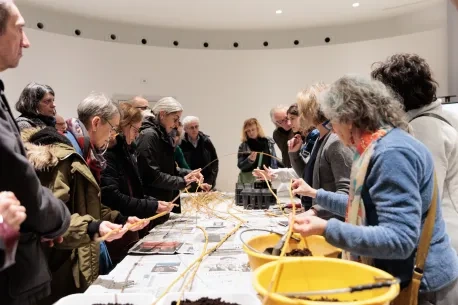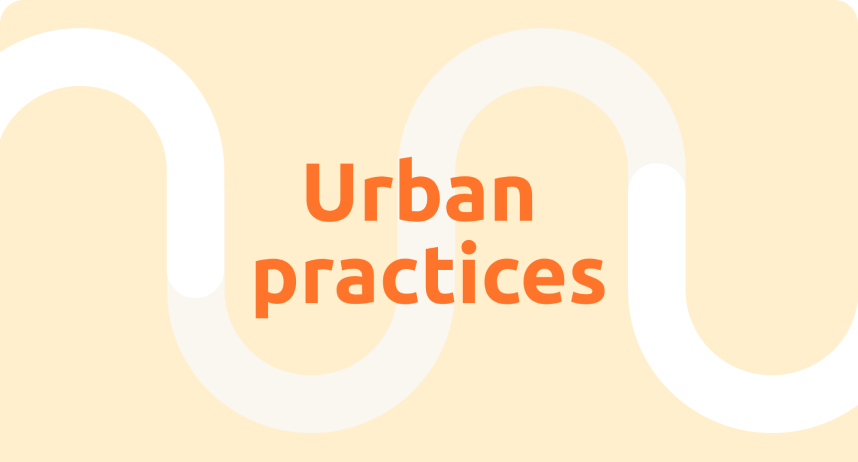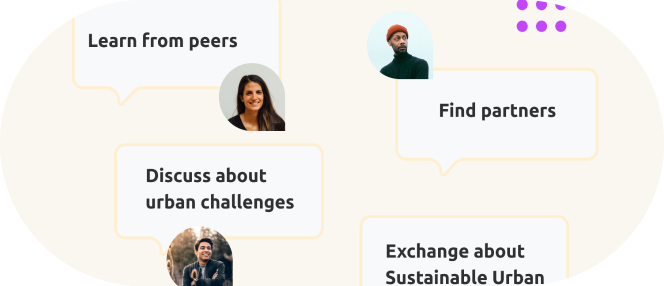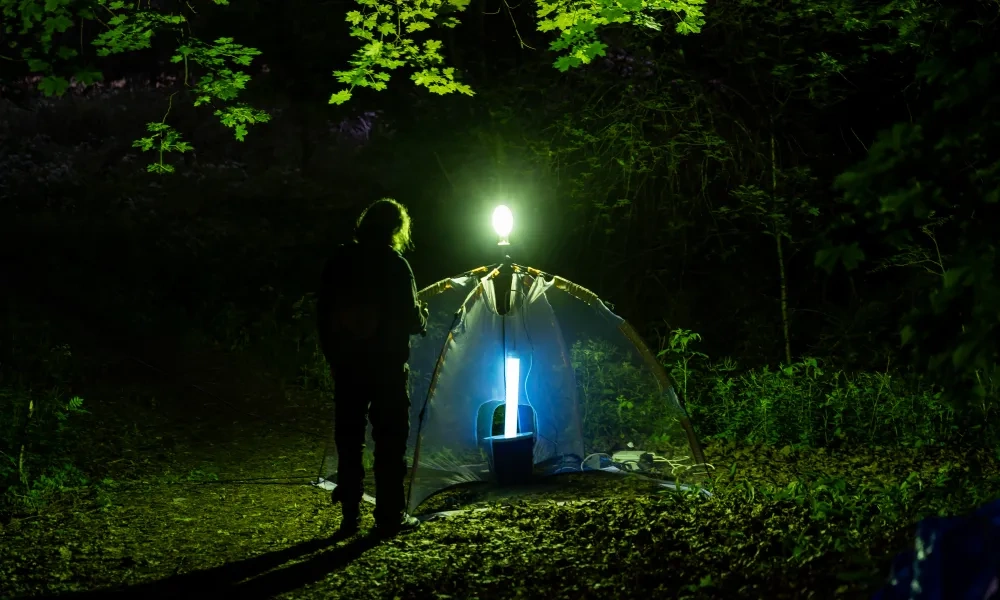
The Urban Diary of the Urban Biodiversity Parks Project – Chapter 1
How can we shed light on key developments in a complex project like the Urban Biodiversity Parks project? Well, as with any urban challenge, one must be innovative, creative, and willing to think outside the box. Dear reader, we hope you will appreciate our direct, honest, and slightly unorthodox approach to telling our story. Looking back at the first year of our project’s implementation, we see a collage of activities, results, conclusions, and lessons learned – far too rich and complex to condense into a single article.
As these insights are simply too valuable not to share, we invite you to explore our 5-minute interviews with key actors on our journey, immerse yourself in the collage of key moments presented on the accompanying poster, and, ultimately, reflect on the progress of our project.
5-Minute Interviews
Elina Rantanen, Deputy Mayor for Urban Environment, City of Turku
How does the Urban Biodiversity Park project align with the City of Turku’s long-term vision for urban development?
As outlined in our strategic documents, by 2030, Turku aims to become one of the world’s leading cities in climate action, circular economy and nature conservation. Furthermore, we are committed to achieving carbon neutrality and are already working intensively towards these goals. In recent years, with the ever-increasing loss of biodiversity, we have recognised the vital role of nature, particularly in urban areas. This is why we have made nature a key priority in the latest version of our strategic plans. As you can see, the Urban Biodiversity Park project aligns perfectly with this strategic framework and serves as an important tool in achieving the goals of Turku’s Biodiversity Programme.
Are you, as the City of Turku, alone in this vision, or are other cities in Finland joining you?
No, of course not. We are part of several networks, such as Nature Municipalities, where we communicate, exchange good practices, and even engage in a bit of friendly competition. This “healthy competition” is actually very important, as it drives us all forward.
The path to innovation can be winding and uncertain. How would you define success in the case of the Urban Biodiversity Park project?
That’s a really difficult question, as we are doing something new and innovative. In that context, any achievement in the field of biodiversity improvement should be considered a success. However, for me personally, measurable results are key – because we are seeking proof of our concept.
And what would you describe as the “WOW factor” of this project?
I believe the WOW factor is already there. We are integrating biodiversity into the urban fabric of our city, which marks a significant evolution in our policy approach. Moreover, we are doing this in close collaboration with our citizens, who truly care about nature in Turku and are actively asking to be involved.
With the Biodiversity Park project, Turku is developing an interesting urban good practice. At the same time, you are also testing its potential for transfer. What are your long-term ambitions for this project at the international level?
I hope that through this project, we will develop concrete solutions that can be effectively integrated into everyday city planning and management. If we achieve such practical results, we can transform Turku. This transformation could position Turku as a “lighthouse city,” enabling us to inspire and influence other cities worldwide. Of course, we also want to learn from other cities and their good practices – but together, we just might change the world.
Maija Rusanen, Project Development Unit, City of Turku and Johanna Salmela, Landscape Designer for the City of Turku
As we have already shared the story of how the Urban Biodiversity Parks project was created in our first article and zoom-in, I’d like to ask: how would you define success in the case of the Urban Biodiversity Park project?
Johanna: I would be satisfied simply to see Skanssi Park established and thriving years into the future. For me, that would be a clear sign that we have successfully designed an effective and sustainable long-term management system.
Maija: Success would mean that Skanssi Park is not only there but is actively used by citizens and has become an exciting learning environment for biodiversity.
Image
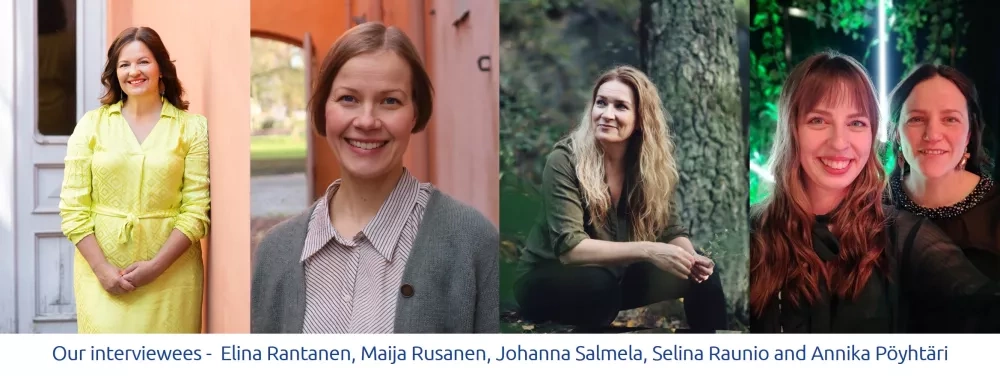

What is your biggest concern regarding project implementation?
Maija: To be honest, my only concern is the project management aspect. It’s quite a large project with many activities and a tight timeline.
Johanna: My biggest concern is quite different. It’s deer—as strange as it may sound, they pose a real threat, especially to young plants. Another major challenge is invasive species, which could disrupt biodiversity in Skanssi Park.
What is your long-term vision? As co-creators of the Urban Biodiversity Parks project, where do you see it leading?
Johanna: I hope we will build our own expertise in key areas, such as seed collection, which is essential for increasing biodiversity. In fact, it would be fantastic to establish our own seed bank that provides high-quality seeds for all green areas in Turku.
Maija: Another important goal is successfully engaging different stakeholders – such as the private building sector. If we manage to raise their awareness of biodiversity and see them integrate it into their daily operations, that would be a significant and impactful mindset shift.
In the long run, it would be incredible to see other cities across Europe adopting our solutions and drawing inspiration from our project. I strongly believe in the project’s potential for transferability and replication. If that happens, it would mean we have succeeded in our ambition of becoming a true “lighthouse city.”
Annika Pöyhtäri, Project Manager of the Urban Biodiversity Parks project and Selina Raunio, Project Coordinator of the Urban Biodiversity Parks project
You have both recently taken on your roles in the project without being involved in its initial design. Did you find it challenging to step into your positions, especially as you had to “hit the ground running”?
Selina: I remember the first two weeks were really hectic—we were simply trying to absorb as much information as possible, as quickly as possible, while prioritising the next steps. It actually helped that we started at the same time, as we discovered the project together and immediately felt like a team. So, in the end, it wasn’t too stressful.
Annika: I had a good idea of what I was getting myself into, thanks to my previous work experience. You just have to stay positive, take small steps, appreciate even minor achievements, and by the end of the day, you can see progress. That’s important because it gives you confidence for the next day. We’re both proactive and outspoken, so we constantly push each other forward.
Can you highlight one or two key challenges you foresee in the project implementation process, particularly in relation to your roles and responsibilities?
Annika: As the project manager of a highly complex initiative, I suppose I should say project management and coordination, right? But honestly, my bigger concern is making sure we don’t try to do too much. In a broad and innovative project like this, there’s a daily temptation to take on additional tasks beyond the original scope.
Selina: One major challenge is communicating biodiversity – such a broad and multifaceted topic – to citizens in a way that is clear, engaging, and accessible.
What excites you most about this project, and what is your biggest fear?
Selina: For me, the goal is just as important as the journey itself, so I can’t wait to see our final results. My biggest fear is that we might not achieve anything substantial and that we’d have to tell our funders we didn’t make the impact we intended.
Annika: I’m eager to see how this great experiment unfolds. My biggest fear is that we might struggle to keep the project on track and risk losing control.
The path to innovation can be unpredictable. How would you define success in the case of the Urban Biodiversity Park project?
Selina: For me, it’s quite simple – we need to prove that the concept works. It’s also incredibly inspiring to collaborate with so many excellent local experts and learn from them. That’s why I believe success should also be measured by the collective increase in biodiversity knowledge across Turku.
Annika: I completely agree – we have a very dedicated consortium that is not afraid to experiment. The only way to improve the current situation is to try new things. Of course, being innovative inherently means there’s a risk of failure – but that’s how we learn. Discovering that something doesn’t work is just as valuable because it brings us one step closer to our goal. And with our multidisciplinary team, I truly believe we will succeed.
The collage of our key moments
At this point, we invite you to immerse yourself in the collage of key moments presented on our Urban Diary Poster.
For conclusion, a quick reflection of our progress
Below you can find a few identified issues and opportunities we need to pay attention to in our next activities:
Image

Image

As you were able to see through our Urban Diary Poster, work on all work packages is progressing. Sometimes not as fast as we would hope for and for sure not without unexpected obstacles. However, we believe that our first steps were sound and went into the expected direction – putting us in a great position for year 2 of our implementation.
Let’s see how it will unfold…
About this resource
The European Urban Initiative is an essential tool of the urban dimension of Cohesion Policy for the 2021-2027 programming period. The initiative established by the European Union supports cities of all sizes, to build their capacity and knowledge, to support innovation and develop transferable and scalable innovative solutions to urban challenges of EU relevance.
Similar content
